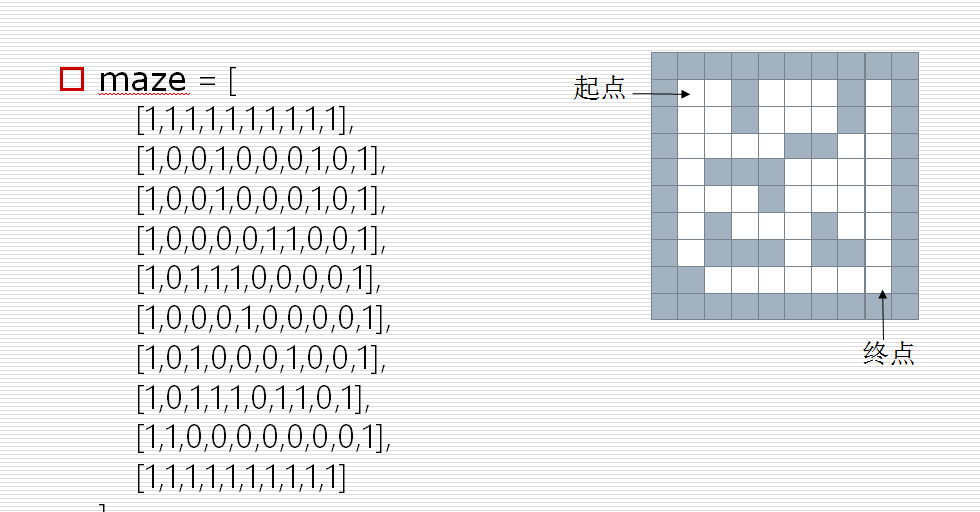栈
def cheak_kuohao(s):
stack = []
for char in s:
if char in {'(','[','{'}:
stack.append(char)
elif char == ')':
if len(stack)>0 and stack[-1] == '(':
stack.pop()
else:
return False
elif char == ']':
if len(stack) > 0 and stack[-1] == '[':
stack.pop()
elif char == '}':
if len(stack) > 0 and stack[-1] == '{':
stack.pop()
else:
return False
if len(stack) == 0:
return True
else:
return False
print(cheak_kuohao('()[[{]]}'))
感觉拿栈的思想去验证左右括号太二了,改变下顺序 从栈顶出去就不靠谱了
栈做迷宫还是比较靠谱的

maze = [
[1,1,1,1,1,1,1,1,1,1],
[1,0,0,1,0,0,0,1,0,1],
[1,0,0,1,0,0,0,1,0,1],
[1,0,0,0,0,1,1,0,0,1],
[1,0,1,1,1,0,0,0,0,1],
[1,0,0,0,1,0,0,0,0,1],
[1,0,1,0,0,0,1,0,0,1],
[1,0,1,1,1,0,1,1,0,1],
[1,1,0,0,0,0,0,1,0,1],
[1,1,1,1,1,1,1,1,1,1]
]
dirs = [lambda x, y: (x + 1, y),
lambda x, y: (x - 1, y),
lambda x, y: (x, y - 1),
lambda x, y: (x, y + 1)]
def mpath(x1, y1, x2, y2):
stack = []
stack.append((x1, y1))
while len(stack) > 0:
curNode = stack[-1]
if curNode[0] == x2 and curNode[1] == y2:
#到达终点
for p in stack:
print(p)
return True
for dir in dirs:
nextNode = dir(curNode[0], curNode[1])
if maze[nextNode[0]][nextNode[1]] == 0:
#找到了下一个路径
stack.append(nextNode)
#标记为已经走过,防止死循环
maze[nextNode[0]][nextNode[1]] = 1
break
else: #四个方向都找不到
maze[curNode[0]][curNode[1]] = -1 #死路
stack.pop() #回溯
print("没有路")
return False
mpath(1,1,8,8)
